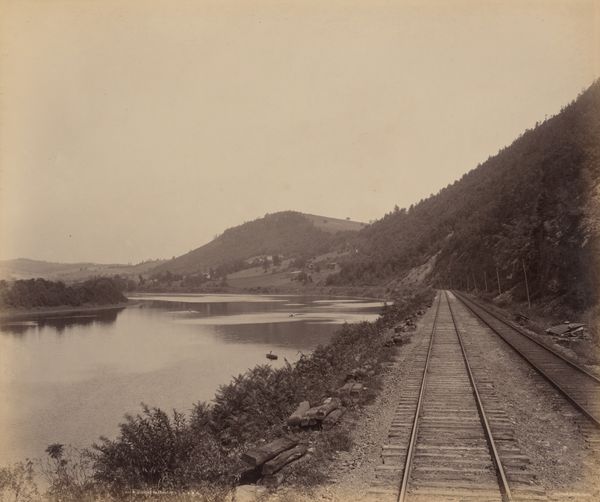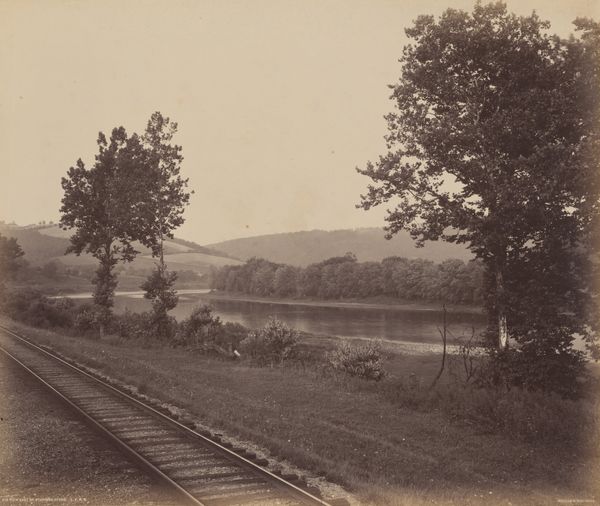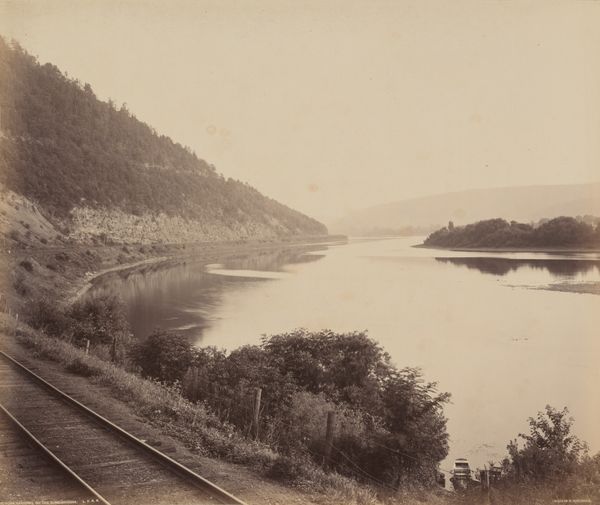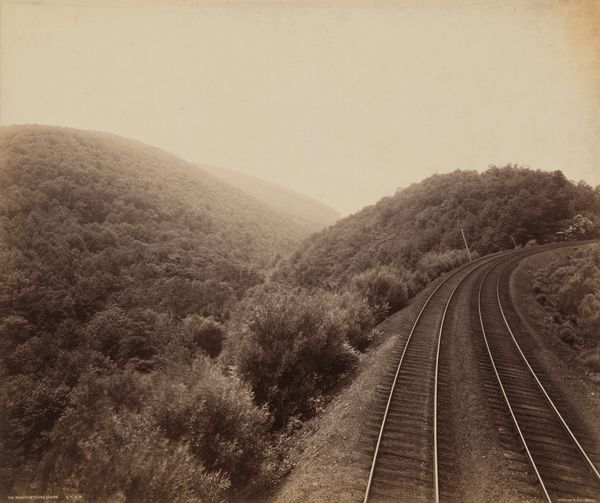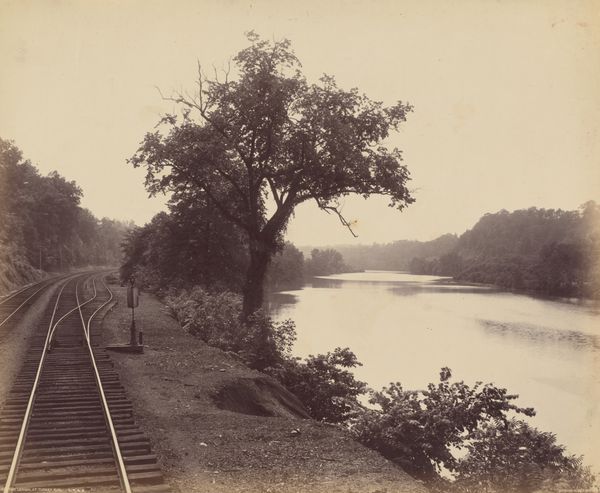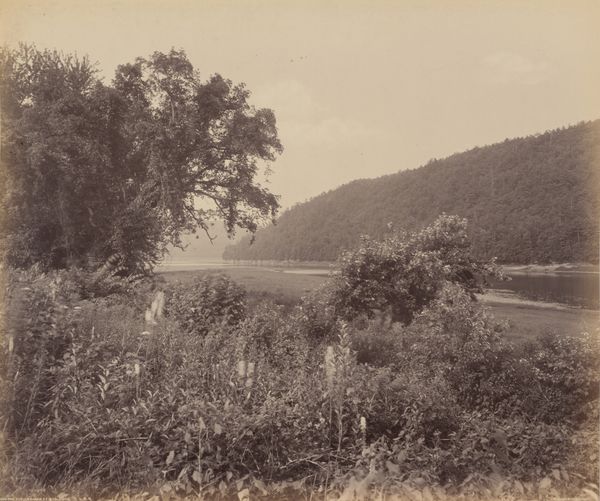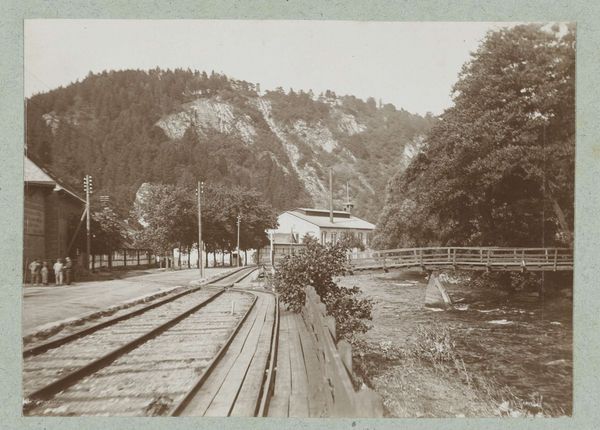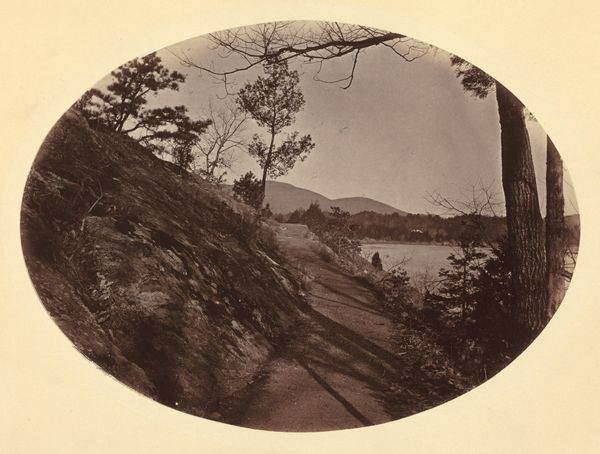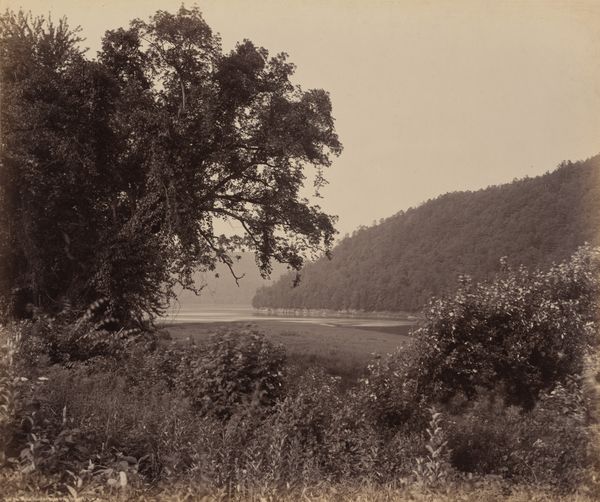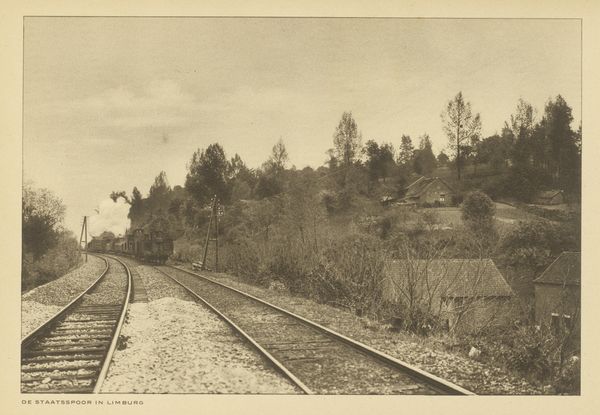
Dimensions: image: 43.5 × 52.1 cm (17 1/8 × 20 1/2 in.) mount: 49.7 × 59.1 cm (19 9/16 × 23 1/4 in.)
Copyright: National Gallery of Art: CC0 1.0
Editor: This is William H. Rau's gelatin silver print, "Cathedral Rocks, Susquehanna Near Meshoppen," from around 1895. The subdued tones give it a rather somber, industrial feel. What stands out to you most about this image? Curator: The most compelling aspect to me is how the industrial encroaches upon the sublime natural landscape, doesn’t it? The Susquehanna, named so beautifully by the Indigenous peoples, bisects the space, yet its symbolism has been, to a certain degree, overridden by the industrial element represented by the train tracks. The telegraph poles add to that visual noise. Editor: Do you mean it shows a tension between nature and industrial progress? Curator: Exactly! The Hudson River School artists were interested in the concept of Manifest Destiny, seeing expansion as not just inevitable but divinely ordained. They romanticized the landscape, sometimes omitting signs of industrialization or minimizing their impact. Rau, however, seems to show them both, presenting an intertwined image. The cathedral rocks and nature are still formidable, but the tracks make a statement. Where do you think Rau positions himself? Is he celebratory or cautionary about industrial advancement? Editor: It's hard to say for sure. The railway follows the curves of the river; perhaps he saw them as working together, even if uncomfortably so. Curator: Consider how this region of Pennsylvania was important to both native peoples, then exploited for resources and traversed via railroad, influencing even its river. Look at the way the misty atmosphere softens the industrial edges… Perhaps there’s a nuanced, even elegiac, acknowledgement of change here, a visual representation of cultural transformation. Editor: I’m starting to see more now than just a picture of tracks, rocks, and river. The symbolism gives a context to the transformation of land and time.
Comments
No comments
Be the first to comment and join the conversation on the ultimate creative platform.


